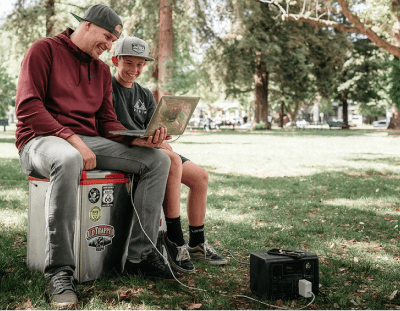No products found
It 's that time of year. The in-laws, the baking, the presents...and most importantly, your incredible Christmas lights display. But before your mind starts whirling with visions of that blue ribbon for "best neighborhood lights," take a look at these easy outdoor Christmas lighting tricks. We'll show you how to hang Christmas lights and get your house looking merry and bright.
Plan Your Design
The holiday decorating itch may strike suddenly and without warning. Before you start, it's best to step back and develop an overall game plan. Resist the urge to simply "wing it."
Pick a Focal Point - For example, if you have columns that frame your entryway, this may be where you want to start. Without a focal point your house will just look like someone blasted lights out of a cannon all over your lawn.
Consider the surface - Check your gutter thickness and shingle flexibility to determine how to best hang lights along the roofline.
Some popular spots for outdoor Chwistmas lights include:
Along your rooflines or eaves
Atop bushes, hedges and trees
Around pillars, posts or deck railings
Around windows, door frames and other architectural features
Near driveways and pathways
Inside window boxes and planters
Measure - Measure any straight line you want to adorn with lights. This will help you decide how many strands you need. Also, measure the distance to your power source. No one wants a beautiful light display and no way to turn it on.
Lights Galore - The number of lights you'll need to decorate trees and shrubs is a matter of personal preference. A good rule of thumb is 100 lights for every 1-1/2-ft of tree or shrub you want to cover. So a 6-ft evergreen needs at least 400 lights for a basic level of lighting.
Of course, if your goal is for your house to be seen from space, stagger two sets of lights side-by-side, or look for lights that are spaced closer together. Denser lights equal brighter lights.
Prepare Your Lights
Safety First: Use extension cords designed specifically for outdoor use and look for lights rated for indoor/outdoor use. Check the Christmas lights package for details about this as well as for information on the lighted length and how many strands to connect.
Check Your Lights: Frayed or damaged cords are a big no-no. One faulty strand isn 't only a safety hazard - it also could ruin your entire design.
Light Color: Believe it or not, white lights are not all the same color. LED lights typically have a bluish tint, whereas incandescent bulbs are slightly orange. Hang them side by side, and they will look mismatched. Lights can even vary based on manufacturer and how old they are. Make it easy on yourself and buy new lights.
Light Clips: Forget staples, clothespins or any other contraption you 've used in the past for mounting lights to your house. Light clips are your new best friend. We have something for every surface, including gutters and shingles. Simply read the package to find the one that fits your application.
Light Types: There are tons of different light types and colors, so have fun with them. Just make sure you group the same light type together. For example, try using white lights on your bushes but colored lights on your trees and entryway. Top it off with white icicle lights along your roofline.
LED lights will save you money on energy costs, and you don 't have to worry about them overheating.
Icicle lights look great on the eaves of your roof - just make sure to cluster them together. If stretched too far apart, the look is completely lost.
For your bushes, try net lights, which are like a blanket of lights. Simply lay them on your bushes, and - boom - you 're done.
Finally, take the guesswork out of when to turn the lights on and off by adding a timer.
Getting Started
Before you hang outdoor Christmas lights, decide what you're going to work on first and gather everything together. This is where having a helper comes in handy. Start with bushes, then trees, any windows, the doors and finally the roofline.
Test Your Lights - Just because lights are new, they still need to be tested - on the ground. The last place you want to find out your lights are busted is on top of a ladder in the cold. Go ahead and attach your light clips at this point and make sure they're all in the same direction.
Attach Lights to Shutters or Shingles - To attach lights to your gutters, use an all-purpose light clip. It works with any type of light. Hang the lights pointing up or down, just make sure they're all clipped in the same direction. If you don't have gutters, you can use the same clip to attach lights to your shingles instead. Simply flip the clip around.
Attach Lights to Trees - If you're hanging lights in a tree, try using a light-hanging pole. Hanging poles are also great if you don't want to get on a ladder.
Set a Timer - Who wants to wake up at 3 a.m. to find the Christmas lights have been on all night? Now that the lights are up, plug them into an outdoor timer. Some timers even have light sensors that automatically turn on at dusk - technology at its finest.

